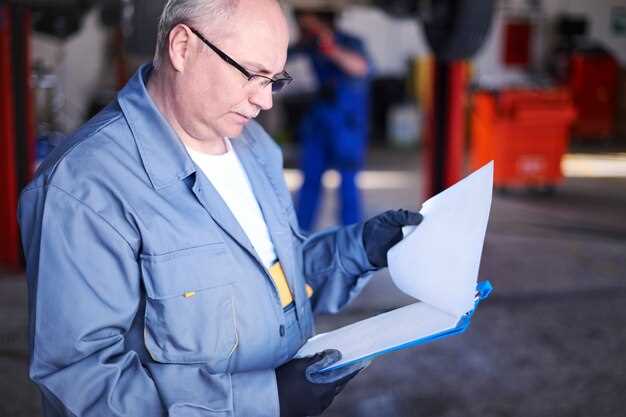
The alternator is a vital component of any vehicle’s electrical system, responsible for charging the battery and powering the electrical systems while the engine runs. In import vehicles, where advanced technology and specific engineering practices are common, recognizing alternator problems can be particularly challenging. Understanding the signs and symptoms of alternator failure is essential for timely diagnosis and repair.
Common symptoms of failing alternators may include dimming headlights, electrical issues, and unusual sounds or smells. It is crucial for vehicle owners and technicians alike to be aware of these indicators, as they can vary significantly based on the make and model of the vehicle. With import vehicles often featuring unique electrical configurations, a thorough understanding of the specific design can help streamline the troubleshooting process.
This article aims to provide import vehicle owners and automotive technicians with practical insights into diagnosing alternator problems. By equipping readers with the necessary knowledge, we hope to facilitate early detection and effective resolution of alternator-related issues, ultimately ensuring the reliability and longevity of their vehicles.
Recognizing Electrical Symptoms of a Failing Alternator

Identifying electrical symptoms of a failing alternator is crucial for maintaining the performance of your import vehicle. One of the first signs to look for is dim or flickering dashboard lights. As the alternator struggles to provide sufficient power, electrical components may not receive the required voltage, causing them to behave erratically.
Another common indication is the presence of warning lights on the dashboard. The battery light, specifically, may illuminate when the alternator fails to charge the battery adequately. Consistent illumination of this light during operation should prompt immediate inspection of the alternator.
Drivers may also experience issues with power accessories, such as windows, seats, or mirrors. A marked decrease in functionality or slow operation of these components often signals inadequate power supply, suggesting alternator difficulties.
If you notice strange sounds, such as grinding or whining noises, this may be a direct result of wear and tear on the alternator’s bearings or internal components. These auditory symptoms can indicate that the alternator is failing and should be investigated promptly.
Additionally, frequent dead battery incidents can indicate a malfunctioning alternator. If the battery appears charged but the vehicle fails to start, it may point to the alternator’s inability to recharge the battery during operation.
Finally, electrical burning smells should not be overlooked. If you detect a burnt odor or notice any smoke coming from the alternator area, this could signal significant electrical problems. Handling these symptoms quickly can prevent further damage to your vehicle’s electrical system.
Testing the Alternator Output with Multimeter Tools

To effectively diagnose alternator issues in import vehicles, one of the most reliable methods involves testing the alternator output using a multimeter. This tool allows you to measure the voltage and ensure the alternator is functioning properly.
Before beginning the test, ensure that you wear appropriate safety gear and follow standard safety protocols. Start by setting your multimeter to the DC voltage setting; typically, this will be in the 20V range, as the alternator usually outputs between 13.5 to 14.5 volts when functioning correctly.
Next, locate the alternator in your vehicle. It is often found near the front of the engine, connected to the battery via output wires. With the engine off, use the multimeter to check the battery voltage first. Place the red probe on the positive terminal and the black probe on the negative terminal of the battery. A healthy, fully charged battery should read around 12.6 volts or more.
Once you have confirmed the battery voltage, start the engine. Allow it to idle and carefully recheck the voltage at the battery terminals. This time, the reading should indicate an increased voltage, typically between 13.5 and 14.5 volts, confirming that the alternator is effectively charging the battery.
If the multimeter readings are lower than expected, you may have a failing alternator. To isolate the issue further, you can also check the output directly at the alternator. With the engine running, place the red probe on the alternator’s positive terminal and the black probe on the ground or the alternator’s negative terminal. The voltage reading should once again fall within the 13.5 to 14.5 volts range.
In addition to voltage readings, inspect the connections to the alternator. Corroded or loose terminals can lead to poor performance, which may not alter voltage output readings but can affect the system’s overall functionality.
If the alternator fails to generate adequate voltage during these tests, replacing the alternator is often necessary to restore proper vehicle operation. Regular testing and maintenance of the alternator can prevent unexpected failures and ensure reliability, particularly in older or high-mileage import vehicles.
Common Noise Indicators That Signal Alternator Issues
When diagnosing alternator problems in import vehicles, paying attention to abnormal noises can be crucial. These sounds often serve as telltale signs of underlying issues. Understanding these common noise indicators can help in early detection and prevent more extensive damage.
1. Whining Noise: A persistent whining sound, particularly that increases with engine speed, can indicate a failing alternator. This noise is typically caused by the internal bearings wearing out. The sound often resembles the pitch of the engine’s RPM and may become more pronounced when electrical load increases.
2. Grinding Noise: If a grinding noise accompanies the alternator’s operation, this could signify dire issues, such as damaged internal components or misalignment. This noise is a clear warning that could lead to complete failure if not addressed promptly.
3. Clicking or Popping Sounds: Occasional clicking or popping noises might indicate a loose wire or connection associated with the alternator. These sounds can also suggest electrical malfunctions, which could compromise the alternator’s efficiency and overall vehicle function.
4. Humming or Buzzing: A low-frequency humming or buzzing noise can be a sign of electrical issues within the alternator. This noise often comes from the diodes or voltage regulator, potentially indicating that the component is struggling to convert AC to DC effectively.
5. Squealing Noise: A squealing sound may emerge when the alternator belt becomes too loose or worn. While this is more about belt tension than the alternator itself, it can still impact the alternator’s performance and requires immediate attention to avoid further complications.
By staying vigilant for these sounds, vehicle owners can take proactive measures to address alternator issues, ensuring a reliable and efficient operation of their import vehicles.




